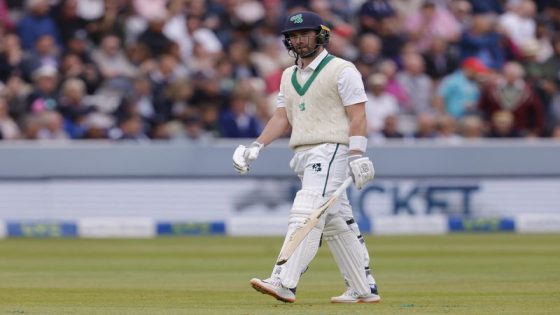The NFL is a copycat league. It’s a common saying but it is appropriate, especially in today’s game when the technology around the game and in life allows ideas to be xeroxed, tweaked and modified at a rapid pace.
There aren’t too many outright new ideas in football. Much like the old adage about there only being seven plots, there are only so many ways to draw a line on a whiteboard. There are definitely different colors and angles with which you can draw those lines, though.
I wanted to share a few concepts that I expect to see more of this season and beyond. Whether from college, last season, or something that has started to proliferate this preseason.
More motion … but to block
On offense, there are already a few teams on the forefront of what is rapidly becoming the standard in the NFL. That is an increase in tight end and players in motion that end up becoming blockers on the play. In 2023, we saw an onslaught of motions working outward and rapidly across the formation, creating new formations and blocking angles at the snap of the ball.
One of those offenses, the Dolphins under head coach Mike McDaniel, who weaponized the speed of his wide receivers with fast motion going every direction, was also motioning his tight ends to help with their angles in the run game. That continued this preseason.
the Dolphins are experimenting with every type of motion imaginable, especially with their tight ends.
look at the quick motion by #89 right before the snap of the football to create leverage. Combined with #81 pulling, it ends up making a Counter run concept. pic.twitter.com/sycEfKYVTl
— Nate Tice (@Nate_Tice) August 18, 2024
This seems subtle. But what McDaniel and the Dolphins are doing is playing with the reads and keys of the defenders. This is a counter run concept, which typically features two pullers (most commonly a guard and a tight end) and gap blocking from the offensive linemen.
If you noticed, there was only one puller on the play. That’s because the Dolphins had No. 89 Julian Hill short motion and then work right back from where he came. He was “pulling” to the same side and accomplishing the same task as if he were working from the other side of the formation.
Combined with the pistol formation (which also helps create space for more motion to happen since there’s a gap between the center and quarterback) to hide the running back’s intent, it helps slow down and play games with off-ball and edge defenders alike. So instead of Hill ending up right next to his fellow tight end Durham Smythe, No. 81, and thus giving a huge indicator to the defense of what might come, the Dolphins are creating an easier block for Hill and less space for the Washington defender to collapse on the run, and also creating better angles for their offensive linemen as well. (Since no one is pulling, No. 74 Liam Eichenberg and No. 66 Lester Cotton get to double-team the defensive tackle.)
I’m also bullish on the Cardinals’ offense in this regard, particularly their run game, because of the window dressing they applied last year. Here, they have their tight end motion around the quarterback and back to his original alignment to kick out (or at least slow down) Myles Garrett.
Watch the Browns linebackers trigger on the play and create a huge void for the Cardinals’ run to attack.
I’m keeping a particular eye on the Seahawks offense under Ryan Grubb this year, too. I was a fan of the things he did at Washington and the Seahawks already showed early indicators of motion and formation ballyhoo during the preseason.
Here they start in a spread 3×1 formation, a heavy passing formation with a limited run set (since the tight end is not attached to the formation).
But the Seahawks motion the TE before the snap of the football, creating a new running formation strength and also helping out the TE build up leverage on his block.
Seahawks with a great example of how TE motion at the snap can create new angles in the run game. It completely shifts the point of attack before the defense can adjust. pic.twitter.com/KXpxYjL8ed
— Nate Tice (@Nate_Tice) August 18, 2024
Why does this affect the defense?
The defense is worrying about a certain run menu from a spread formation with the tight end and passing strength on their right. So the Titans defense sets their defensive linemen and front accordingly, with the defensive tackle (the circled 3-technique below, i.e. over the outside shoulder of the guard) aligned toward that formation strength.
With the tight end’s motion right before the snap of the ball, the offense is showing a completely different look to the defense, which has no time to actually adjust.
With the run concept called, the angles for the main double-team on the run becomes that much more advantageous for the offense. Look at the circled nose tackle (the 1-technique over the outside shoulder of the center), which is the offensive line’s double-team, and the angle for the climb to block No. 45.
I have written extensively about the Rams’ own innovations in the run game, with Puka Nacua helping unlock a big part of the de facto fullback looks they use (again, with plenty of motion before the snap). It’s something other teams (like the Seahawks) have already shown that they’re implementing in their offense this year.
Three play sequence for the Rams offense.
Same formation and pre-snap motion with Puka Nacua. But getting to two different run concepts (going Zone, Duo, Zone) that keeps the Cardinals defense guessing. pic.twitter.com/Hi6k8VPZrk
— Nate Tice (@Nate_Tice) October 19, 2023
With defenses knowing offensive tendencies better than ever, and the ongoing battle to go last with an adjustment on a given play, these motions of blockers that change or manipulate the point of attack are offenses’ next attempt to make the last move before the snap of the football.
Expect an uptick in these run concepts
There are certain run concepts that we might seen an uptick of this year. The duo run concept, a more physical run that I’ve written about before, should see more usage this year, continuing an upward trend we’ve seen in recent years.
There were an average of 4.4 duo runs per game in 2023, an uptick from 3.5 in 2020, according to SportsInfoSolutions. Which correlates with the drop in zone run concepts, from 29.2 per game in 2020 to 27.7 in 2023. Duo also saw its highest league-wide success rate in SIS’ database, recording a 43.5% rushing success rate in 2023. That’s an increase of nearly 4% from 2022 and well above the previous high of 43% seen in 2020. (And sure enough, as defenses have found more answers, the success rate of zone runs dropped from 39.9% in 2020 to 37.3% in 2023.)
Other runs like the “Dart” run concept could also see more usage from teams. The Bills are the team that majors in this run, but I could see others implementing it as they look to expand their menu.
“Dart” is a common term for pulling the tackle and using a gap run scheme. You can see good examples of the Bills using it at the 15-second and the 1:14 marks here:
the Bills run game over the past couple of weeks.
a healthy helping of Duo, some Counter, some Tackle Insert, a little bit of Sprint Draw. We’re liking what we’re seeing! pic.twitter.com/9T0r61JkKC
— Nate Tice (@Nate_Tice) September 27, 2023
The Bills have also been experimenting with variations on their zone runs, turning a typical zone run into one featuring pullers to fit their personnel and to again create better angles in the run game. This has been used by some college offenses the past few years, so it’s interesting to see an NFL team finally using it and seeing how it goes:
Another type of run concept, a more special variety, saw an uptick in 2023 that I could see continuing in 2024 and beyond: end-arounds and reverses.
The 2023 Dolphins ran more end-arounds and reverses — there are differences between the two, but I’ll group them together for this exercise — than any individual team has in SIS’ database. They ran 19 of them last season, sometimes putting players other than a wide receiver, like De’Von Achane, as the recipient of the around to take advantage of their speed:
Other offenses from the Shanahan tree also had a slight increase in their use of end-arounds and reverses in 2023, taking advantage of more astute defenses that are keyed on offensive tendencies. The Packers and 49ers both ran 15 such plays, with the Texans ranking fourth with 12 such plays.
This play is not called at a high rate, with an average of 0.65 per game in 2023. But that’s still an increase from previous years, and because of the success of such plays and other teams studying each other, I don’t see it going away.
Especially if you have juice with your skill players to take advantage of overplaying defenses:
Even Jim Harbaugh and the Chargers got in on the fun with the first offensive play in their final preseason game against the Cowboys:
And the Dolphins were even running it for new tight end Jonnu Smith this preseason:
Passing game is all about answering defense’s final form
In the passing game, look for an increase in true full-field dropback concepts with answers to every coverage. With defenses running just about everything, passes that have a viable answer against whatever the final coverage form is have become important. And a quarterback that can get to that answer is just as important.
Plays like this NFL staple have been seen throughout the preseason. It’s a concept that’s popular in the Shanahan tree featuring two hi-los (two similar routes at different depths), including a corner route and flat route to the boundary and the hi-lo over the middle of the field with an inside hitch and dig, all paired with a running back swing route.
The quarterback has an answer on this concept no matter the coverage call. He just has to figure out how to get to it promptly by finding any indicators he can and shortcutting the progression. It’s more of an ask for the quarterback to do that, but it also leads to the best rewards (and why having a GUY back there matters).
On the defensive side of the ball, there will be more Cover 2 this year, which has already been happening as defenses realize they can put different bodies to fulfill the same tasks, but still disguise their looks to make like difficult on the quarterback and offensive line.
Nontraditional Cover 2 looks started to pop up with more frequency last year. Especially with defensive coordinators that like to throw exotic pressure looks at the quarterback. Teams like the Cardinals, Vikings and Chiefs all are finding different ways to move the Xs around on the chalkboard to buy that extra half-second for their pass rushes to get home.
the Cardinals can get to a variety of coverages from these looks, this starts off as a (loose) singe-high shell, with Baker in the post. But then it turns into a Cover 2 look, with Baker as the vertical seam defender, after the snap of the ball. pic.twitter.com/7YOaUdYTh7
— Nate Tice (@Nate_Tice) July 31, 2024
Plays like this, which screams single-high coverage from the Chiefs, turns into a creeper pressure bring safety Justin Reid on a blitz with a dropping defensive end and Cover 2 behind it.
Also be on the lookout for coverages that truly double-team or “bracket” another team’s top receiving option. Bill Belichick was the king of this coverage during his tenure in New England. Here’s a clip of him telling Chad Ochocinco about their plan to wipe him out of the game with double-teams:
Coordinators like the Vikings’ Brian Flores and the Chiefs’ Steve Spagnuolo Chiefs have also implemented coverages that double the top two receiving options for the opposing team. Putting the onus on the quarterback to find an auxiliary option on a concept. As teams try to build out their pass-catching options, look for defenses to use these coverages to make top-heavy offenses work for it on passing downs. (It also makes real receiving options out of the backfield that much more valuable, because it creates a conundrum for the double-team.)
It remains to be seen whether other coordinators really try to emulate Flores min-maxing defensive style of either blitzing or dropping eight into coverage on nearly every play, but I’m willing to bet other teams did study the Vikings’ defense last year for inspiration.
Study up on ‘Odd Mirror’ fronts
One last defensive concept that I could see being called more frequently, especially because athletic quarterbacks aren’t going away any time soon, is what they call “Odd Mirror” fronts.
You might remember this type of defensive front from 2022, when the Bills intercepted Patrick Mahomes to close the game in the fourth quarter.
The coverage call behind the front can vary, but what “Odd Mirror” means is a three-defensive lineman look. (Odd = odd number. Get it? Any guesses what a four-down front is called?) The mirror element is the one or two off-ball defenders aligned on the inside. The mirror call is what we typically think of as a “QB spy,” he is mirroring the quarterback’s movements and, in theory, pressuring the quarterback or cleaning up the mess if they attempt to break contain.
This front has been a staple on passing downs in college for a few years now, because it’s a great combination of flooding the passing lanes with bodies, which will naturally force the quarterback to hold onto the football. And when the quarterback does look to extend the play when no one gets open, it baits the quarterback into fool’s gold escape lanes and has a player (or players) ready to corral the quarterback.
Here the Chiefs use the front against the Eagles and Jalen Hurts, with three defensive linemen and two linebackers (Drue Tranquill and Willie Gay) as the mirror players for whatever side Hurts could potentially scramble to.
A good example that even though scheme is important, and we can copy and paste it as much as we want. But sometimes, it’s good to just have a Chris Jones.
Source Agencies



